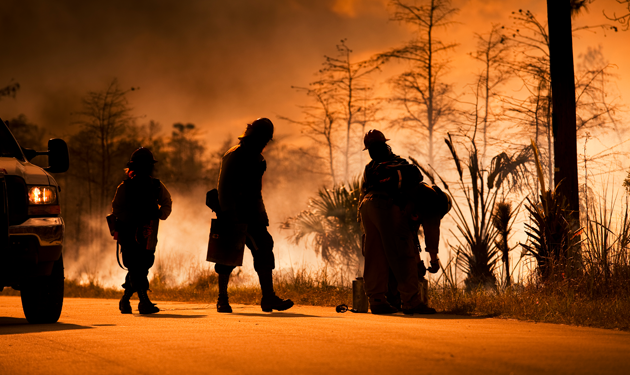
In excess of 600 homes destroyed. More than 1.8 million hectares razed. Six lives lost.
That is the toll residents of Queensland, New South Wales and South Australia have so far paid after enduring one of the worst starts to the bushfire season ever experienced.
But with many fires still burning in areas already severely impacted by ongoing drought and the hotter summer months still ahead of us, it is an unfortunate reality that those numbers will likely rise further.
The state and federal government has set aside $48 million for bushfire recovery in NSW while all three states have offered those affected support to those impacted by fire or drought in the form of financial assistance, emotional wellbeing and support services and information, referrals and advice.
In many cases it is only now that the severity of these disasters has begun to hit home with the wider Australian population. Yet for those whose lives have been decimated as a result of these disasters, it is just the start of their journey.
At times like these it can be difficult to know how to help as an individual but fortunately there are a number of ways you can assist those who need your help the most.
Financial contributions
Whether it’s $10 or $10,000, every monetary donation provides vital funds to support those in need. While there are numerous private fundraisers being held by local groups up and down the eastern seaboard and beyond, it’s important that you ensure the money you donate does not get eroded by fees or other administration costs.
The best way to ensure your money makes a difference is by giving directly to registered charities such as the Australian Red Cross, The Salvation Army Emergency and Disaster Appeal or the St Vincent de Paul Disaster Appeal.
Other charities you may consider giving to include Aussie Helpers, Drought Angels, Lion’s Club’s Need for Feed Australian Red Cross, Rural Fire Brigades Association Queensland, the NSW Royal Fire Service, The Bushfire Foundation, The Country Women’s Association of NSW Drought Aid, or Blaze Aid.
To assist with their fire-fighting efforts, the NSW Rural Fire Service also needs ongoing funding. It accepts direct financial contributions from the public while local RFS brigades also rely heavily on donations to sustain their efforts.
Donations of goods
Another way to help support those doing it tough as a result of the impact of extended drought, or more recently the fires that have swept through much of the country, is by donating goods both used and new to those who have lost so much. Those at the coal face are in need of items such as blankets, clothing, children’s toys and furniture. Food, in particular non-perishable food items, are also in constant demand, as are animal welfare items such as cat and dog foods and beds, bottles for feeding and knitted mittens for those animals to assist the koalas, wombats and native wildlife whose habitat has been destroyed and who may have been injured while fleeing fires.
Buying rural
With Christmas fast approaching, the NSW Government is urging residents in that state to support its new Buy Regional campaign which in addition to those at the farm gate, aims to generate income for all parts of the regional economy, including retail trade and small businesses, impacted by the drought. The initiative provides a website for drought-stricken and bush fire-affected rural and regional sellers to showcase their products across six different categories: wine, fashion, food, gifts for kids, art and design, and Christmas hampers.
In keeping with this theme, there is also the Buy From The Bush initiative. Launched across social media, it is a showcase of items created by rural communities facing drought. Should this not be up your alley there are numerous other ways to show your support. You can Buy A Bale – a rural aid project that provides hay, water and financial assistance to farmers in the worst hit areas or participate in the Parma for A Farmer initiative – a project that sees clubs and hotels donate proceeds from parma sales to help drought-stricken farmers.
Smarter Communities would like to take this opportunity to urge all residents in bushfire prone areas to ensure they have made and discussed with their families a plan in the event of a fire. The Rural Fire Service says embers can travel many kilometres head of a fire, so even residents who are not directly threatened by a bush fire may be impacted by embers – preparing your home can reduce the risk of embers starting spot fires around your home.
Lastly, no matter in which state you live, it’s important for all strata residents to keep themselves informed on days of increased fire danger by paying attention to local radio and TV stations and monitoring the RFS website and social media pages on hot, dry and windy days. This will help you plan your day and make sure you avoid areas where there is an increased risk of a bush fire.











